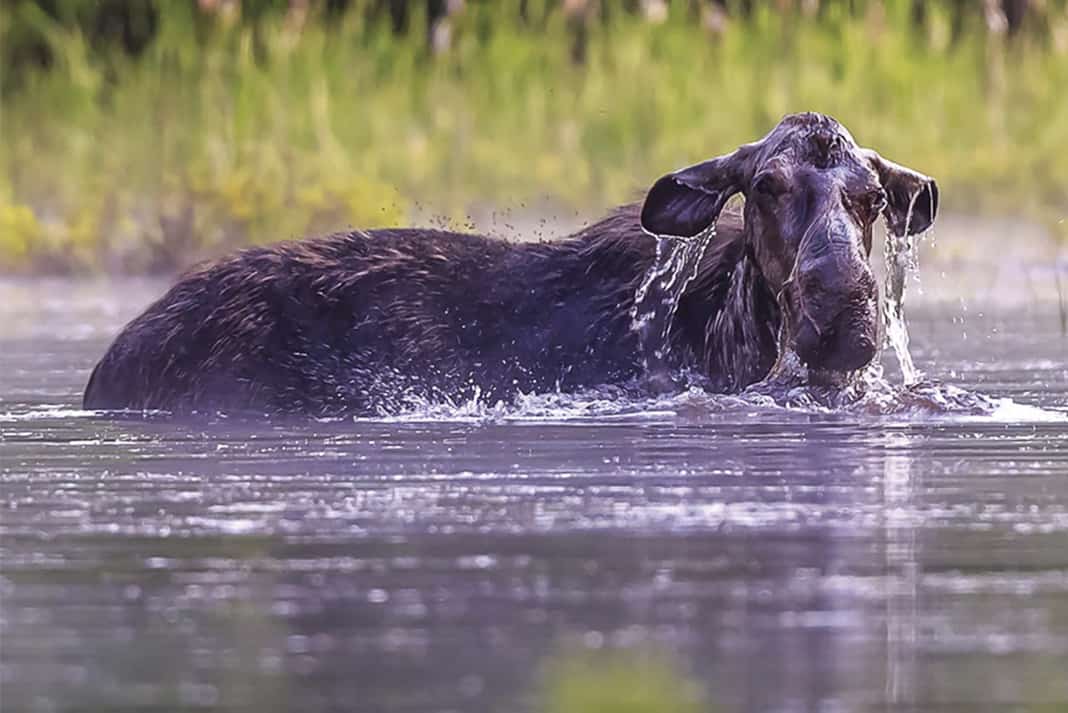As a wildlife photographer shooting in remote locations accessed by paddle, I have to rely on a small collection of camera equipment. It’s limited to what I can fit in front of me in the canoe. Regardless of trip length, I bring the same gear every time. I’m a big believer that a photographer’s emphasis should be placed on image creativity and composition, not the equipment in hand. Some joke wildlife photography is three-parts patience and one-part luck. However, the right gear can take your images to the next level and help you nail the technical elements so you can focus on the rest.
The 6 Essentials In Ben Eby’s Wildlife Photography Kit
1) When I’m hunting for wildlife from the water, my gear is always transplanted from my backpack into a waterproof case that will float. I use a Pelican 1500. I replaced the standard foam inserts with customizable padded dividers to fit my set-up and protect my gear in case of a rough landing on the portage trail.
When in the canoe, I tend to position the case directly in front of me. This is a convenient and accessible place to rest my camera while paddling. Photographers need to anticipate the shot before spotting the subject. On a quiet lake at dawn, the surest way to spook any nearby wildlife is a camera case snapping open as you fumble for a new memory card.
2) Start off by setting up with your longest lens possible. A long lens allows you to move in slowly, giving the animals time to become comfortable with your presence.
Most photographers agree the quality of the lens is more important than the model of your camera body. Generally, the better quality the lens, the sharper the image will appear and the more natural the light looks. My Canon 400mm f/4.0 IS DO lens is extremely small and lightweight despite its longer focal length. It’s also stabilized for handheld work, which is ideal for a canoe. Sounds perfect, right? It’s also roughly the same price as a decent secondhand Corolla.
Camera lenses are a bit like wine. The really good stuff can cost quite a lot. Some people can taste the difference, while others are happy with a cheaper bottle. Most amateur wildlife photographers will be pleased with the results of mid-range lenses, which cost in the hundreds of dollars, rather than thousands.
3) In a camera body I look for ruggedness, snug weather sealing, robust focus tracking options, and a fast shutter speed. Continuous high-speed shooting is key to capturing fleeting moments, which only last fractions of a second—the moment a hawk nabs a mouse or a fox framed perfectly by brambles. I’m currently using a Canon 1Dx camera body. With this model I’m not deterred by steady rain or snow, so I rarely have to worry about putting my camera away.
4) A wide-angle lens is a staple for any outdoor photographer. This is your go-to lens when taking shots of your partner in the bow, or iconic landscape images of canoes resting on the beaches at sunset. I use Canon’s 16-35mm f/2.8L lens. Though I always travel with a wide-angle lens, its rare there’s an opportunity to use it for wildlife photos—the animals are just never close enough.
5) A medium telephoto lens always travels with me. When in closer proximity to wildlife—such as a moose grazing in the ditch alongside a road, or a curious fox investigating my picnic—this lens is perfect because of its image sharpness, handheld stabilization and zoom flexibility. I am using a Canon 70–200mm f/2.8L.
6) Don’t forget about accessories. Extra fully-charged batteries are essential when working off-the-grid. A good rule of thumb is one fully charged battery per day, plus a spare. Memory cards should be formatted before heading out, and always labelled. I also bring cleaning cloths and a sensor blower—they’re lightweight and will help keep equipment functioning in tough environments. Circular polarizing filters, to suppress glare, are one of my favorite tools of the trade. My carbon fiber tripod stays back at camp for landscape work in the evenings and shooting the stars at night.
Ben Eby is based in Kitchener, Ontario. He travels regularly to wilderness locations in southern Ontario to capture stunning photos of wildlife, in particular, moose and birds of prey. Discover spectacular paddling destinations and experience Ontario’s amazing Canadian Canoe Culture at Ontario Travel.
